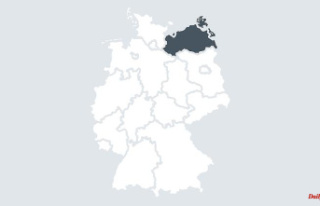Never before have there been so few young people living in Germany. As the Federal Statistical Office announced on Monday in Wiesbaden, at the end of 2021 only every tenth person (a share of 10.0 percent) in Germany was aged 15 to 24. 40 years ago it was still every sixth person. This means that the number of young people in this age group, both in absolute terms and proportionally, is lower than at any time since the time series began in 1950.
With the exception of 2015, the number and proportion of this age group has fallen continuously. According to the statisticians, young people had the highest proportion of the total population in the first half of the 1980s, when the baby boomers were in their teens.
In 1983, the 13.1 million people aged 15 to 24 made up 16.7 percent of the total population.
There is a wide range among the federal states, with eastern Germany standing out. The Federal Office recorded the lowest proportion of young people at the end of 2021 with 8.0 percent in Brandenburg, followed by Saxony-Anhalt and Mecklenburg-Western Pomerania with 8.3 percent each. Bremen had the highest proportion in this age group (11.0 percent). It was followed by Baden-Württemberg (10.6 percent) and Lower Saxony and North Rhine-Westphalia (10.5 percent each).
In a European comparison, Germany is slightly below average. According to figures from the EU statistical authority Eurostat, the proportion of 15 to 24 year olds in the EU at the beginning of 2021 was an average of 10.6 percent. The proportion was highest in Ireland (12.6 percent), followed by Denmark and Cyprus, each with 12.3 percent. It was lowest in the Czech Republic and Bulgaria (9.0 percent each).












